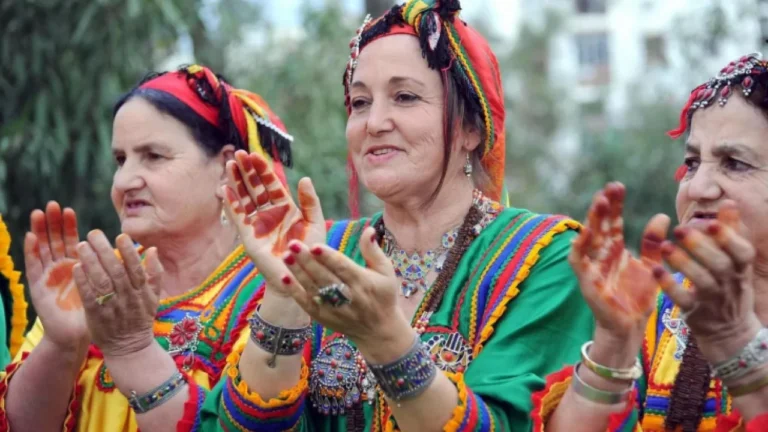The Amaziğ, often referred to as Berbers, are an indigenous ethnic group native to North Africa. With a history that stretches back thousands of y`ears, the Amaziğ have a rich cultural heritage characterized by their unique language, traditions, and social structures. This article explores the origins, language, culture, and contemporary challenges faced by the Amaziğ, highlighting their vital role in the cultural landscape of North Africa.
Origins of the Amaziğ
The Amaziğ people have a long and storied history in North Africa, predating the arrival of Arab populations in the region. Archaeological evidence suggests that they have inhabited areas of present-day Morocco, Algeria, Tunisia, and Libya for millennia. The term “Amazi’ğ ” translates to “free people” or “noble,” reflecting their enduring spirit and connection to their land.
Historical Context
Historically, the Amazi’ğ have faced various invasions and colonization efforts, including those by the Romans, Vandals, and Arabs. Despite these challenges, they have managed to preserve their cultural identity and traditions. The Amazi’ğ played significant roles in various historical events, including resistance against colonial powers during the 19th and 20th centuries, particularly during the French colonization of Algeria and Morocco.
Language and Dialects
The Amaziğ language, known as Tamazight, is part of the Berber branch of the Afro-Asiatic language family. It encompasses several dialects, including Tachelhit, Tarifit, and Central Tamazight. These dialects vary significantly across regions, yet they share a common linguistic heritage.
Recognition and Revitalization
In recent years, there has been a growing movement to recognize and revitalize the Amaziğ language. In Morocco, Tamazight was granted official status in 2011, and in Algeria, it was recognized in the constitution in 2016. This recognition has led to increased efforts in education, media, and public life to promote the use of the Amaziğ language.
The Tifinagh Script
The Amaziğ language is traditionally written using the Tifinagh script, an ancient alphabet with deep historical roots. The revival of Tifinagh in educational settings and public signage symbolizes a broader cultural renaissance among the Amazi’ğ , fostering pride in their linguistic heritage.
Cultural Heritage
The cultural heritage of the Amaziğ is rich and diverse, encompassing various aspects such as music, art, traditional practices, and social organization. Their vibrant festivals, intricate handicrafts, and unique culinary traditions are key components of their identity.
Festivals and Celebrations
One of the most significant celebrations among the Amazi’ğ is Yennayer, the Amazi’ğ New Year, which falls on January 12. This festival marks the beginning of the agricultural year and is celebrated with communal feasting, music, and dance. It serves as a time for families to come together and honor their traditions.
Traditional Crafts
Amaziğ artisans are known for their exceptional craftsmanship, particularly in textiles, pottery, and jewelry. The intricate designs often carry symbolic meanings, reflecting the history, beliefs, and values of the Amazi’ğ people. Their handicrafts are not only functional but also serve as a means of cultural expression.
Contemporary Challenges
Despite their rich heritage, the Amaziğ face numerous challenges in the modern world. Issues such as political marginalization, cultural assimilation, and economic disparities are prevalent. Many Amazi’ğ activists work tirelessly to advocate for their rights and promote awareness of their cultural heritage.
Political Representation
In recent years, there has been a growing movement among the Amazi’ğ for political representation and cultural rights. Organizations such as the Amazigh World Congress and various local groups strive to raise awareness of Amazi’ğ issues on national and international platforms, seeking greater recognition and support for their rights.
Economic Disparities
Many Amaziğ communities face economic challenges, particularly in rural areas where access to education, healthcare, and employment opportunities can be limited. Efforts to promote sustainable development and economic empowerment within these communities are essential for preserving their cultural heritage and improving their quality of life.
Conclusion
The Amaziğ people are a testament to the resilience and richness of indigenous cultures in North Africa. Their deep-rooted history, vibrant language, and unique traditions contribute significantly to the cultural diversity of the region. As the Amaziğ navigate the complexities of modern society, their commitment to preserving their heritage and asserting their identity remains unwavering. Supporting the rights and recognition of the Amazi’ğ is crucial not only for their community but also for the cultural richness of North Africa as a whole.
FAQs
What does “Amaziğ” mean?
The term “Amaziğ” translates to “free people” or “noble” in the Amazi’ğ language, reflecting their cultural pride and identity.
How many Amaziğ people are there today?
Estimates suggest that there are approximately 30 million Amazi’ğ people across North Africa, primarily in Morocco, Algeria, Tunisia, Libya, and parts of Mali and Niger.
What is the significance of the Tifinagh script?
The Tifinagh script is an ancient alphabet used to write the Amazi’ğ language. Its revival is a symbol of cultural pride and a commitment to preserving the Amaziğ linguistic heritage.
How can I learn more about Amaziğ culture?
To learn more about Amaziğ culture, consider exploring literature, attending cultural festivals, or engaging with organizations that promote Amaziğ heritage. Online resources, documentaries, and academic studies can also provide valuable insights.
What are some common Amaziğ traditions?
Common Amaziğ traditions include music and dance, particularly during festivals like Yennayer (Amaziğ New Year), as well as traditional crafts such as weaving, pottery, and jewelry making. Their culinary traditions also play a significant role in their cultural identity.

